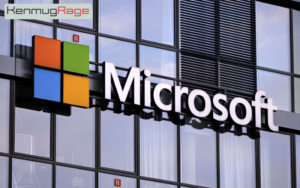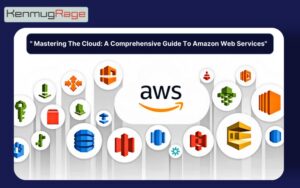” Instant Insight: Exploring The World Of Real- Time Computing”
The world of Real- Time Computing is evolving, and it can be delicate to keep up with the changes. In this blog post, we will explore the instigative new possibilities that Real- Time Computing offers, from briskly data processing to more analytics and decision- making capabilities.
1.What is Real- Time Computing?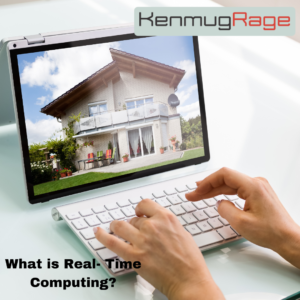
Real- Time Computing refers to the capability to reuse and dissect data incontinently as it’s generated, enabling real- time perceptivity and conduct. In traditional computing, data is reused in batches, leading to detainments in entering and assaying information.
Still, with Real- Time Computing, data is reused and anatomized as it’s generated, allowing businesses to make quicker and further informed opinions. Real- Time Computing relies on important computing systems that can handle large quantities of data in real time.
These systems can collect, process, and dissect data from colourful sources, similar as detectors, bias, and operations, in real time. By doing so, businesses can gain instant perceptivity into their operations, identify trends and patterns, and take immediate action grounded on these perceptivity. Real- Time Computing is essential in diligence where quick decision- timber is pivotal, similar to finance, healthcare, and transportation.
For illustration, in the finance industry, real- time data processing enables dealers to make split-alternate opinions grounded on request conditions. In healthcare, real- time monitoring systems can warn medical professionals to critical changes in a case’s condition, allowing for immediate intervention. In transportation, real- time shadowing systems can optimise routes and schedules in real time, reducing detainments and perfecting effectiveness.
2.The significance of Real- Time Computing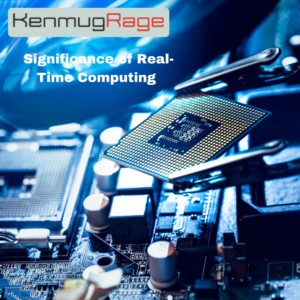
Real- Time Computing has become decreasingly important in the moment’s presto- paced and data- driven world. The capability to reuse and dissect data in real time offers multitudinous benefits for businesses across diligence. One of the crucial advantages of Real- Time Computing is the capability to make quick and informed opinions.
Traditional computing styles frequently involve processing data in batches, performing in detainments in entering and assaying information. With Real- Time Computing, businesses can reuse and dissect data as it’s generated, enabling real- time perceptivity and conduct.
This allows for quicker decision- timber, which is especially pivotal in diligence where timing is critical, similar to finance, healthcare, and transportation. Real- Time Computing also plays a significant part in enhancing client gets . By assaying data in real time, businesses can epitomise client relations, delivering targeted recommendations and offers grounded on guests’ preferences and actions. This position of personalization can significantly ameliorate client satisfaction and drive client fidelity.
Also, Real- Time Computing enables businesses to identify trends and patterns in their operations incontinently. By collecting and assaying data from colourful sources in real time, businesses can gain precious perceptivity into their operations, optimise processes, and identify openings for enhancement. Also, Real- Time Computing allows for better threat operation and prophetic analytics.
3.Examples of Real- Time Computing in Everyday Life
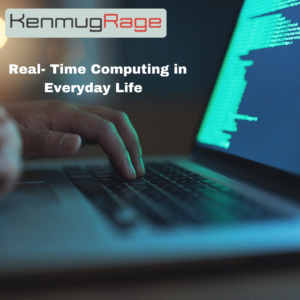
Real- Time Computing has become an integral part of our everyday lives, indeed if we may not always realise it. From the moment we wake up in the morning to the time we go to bed at night, Real- Time Computing is working behind the scenes to enhance our guests and make our lives more accessible.
One illustration of Real- Time Computing in everyday life is in the realm of navigation. Whether we’re using a GPS system in our auto or a smartphone app, these tools calculate on Real- Time Computing to give us real- time business updates, route optimizations, and estimated appearance times.
By continuously assaying data from colourful sources similar as business cameras, satellite imagery, and literal data, these systems can give us the most accurate and over- to- date information to help us navigate efficiently. Another illustration of Real- Time Computing is in the world of social media. Platforms like Facebook, Twitter, and Instagram use Real- Time Computing to deliver substantiated content to users in real time.
Through complex algorithms and data analysis, these platforms can dissect users’ actions, interests, and social connections to deliver applicable content and recommendations. This allows us to see updates from our musketeers and connections as they are, making our social media get more engaging and dynamic. Real- Time Computing also plays a part in the realm of e-commerce. When we visit online shopping websites, Real- Time Computing is used to dissect our browsing history, purchase history, and preferences in order to give individualised recommendations and offers in real time.
4.Challenges and Limitations of Real- Time Computing

Real- Time Computing offers multitudinous benefits and openings for businesses, but it also comes with its own set of challenges and limitations. It’s important to be apprehensive of these factors to effectively work the power of Real- Time Computing. One of the main challenges of Real- Time Computing is the need for important and scalable computing systems.
Processing and assaying data in real time requires significant computational coffers. Businesses must invest in high- performance structure and robust software results to handle the volume, haste, and variety of data generated in real time. Another challenge is data quality and integrity. Real- time data frequently comes from multiple sources and may be prone to crimes, inconsistencies, and inaccuracies.
Real- Time Computing also presents security and sequestration enterprises. With the increasing volume of real- time data, businesses need to apply strict security measures to cover sensitive information from unauthorised access and cyber pitfalls. Data sequestration regulations, similar as GDPR, further complicate the perpetration of Real- Time Computing, as businesses need to insure compliance while processing and assaying real- time data. Likewise, real- time decision- timber can be complex and gruelling .
With the rapid-fire pace of data generation and analysis, businesses need to establish effective decision- making processes and fabrics to avoid impulsive or oblivious conduct. It’s pivotal to strike a balance between speed and delicacy in decision- making to maximise the benefits of Real- Time Computing. Incipiently, the cost of enforcing and maintaining Real- Time Computing systems can be significant. It requires ongoing investment in tackle, software, and professed labour force to manage and optimise real- time data processing and analysis.
5.Advancements in Real- Time Computing Technology
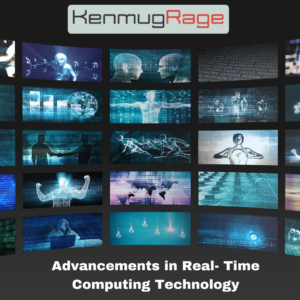
Real- Time Computing technology is continuously evolving, driven by the adding demand for instant perceptivity and real- time decision- making capabilities. Advancements in this field are paving the way for indeed briskly and more effective data processing, analysis, and action.
One of the significant advancements in Real- Time Computing technology is the development of edge computing.Edge computing brings the processing and analysis of data closer to the source, reducing quiescence and enabling real- time perceptivity at the edge of the network.
This is particularly salutary in scripts where low- quiescence is pivotal, similar to independent vehicles, artificial IoT, and remote monitoring systems. With edge computing, businesses can reuse and dissect data in real time, without counting on centralised pall systems. Another notable advancement is the integration of Artificial Intelligence( AI) and Machine literacy( ML) in Real- Time Computing. AI and ML algorithms can dissect large volumes of data in real time, detecting patterns, anomalies, and trends at inconceivable speed.
This allows businesses to make further accurate prognostications, automate decision- making processes, and optimise operations in real time. AI and ML in Real- Time Computing also enable visionary monitoring and discovery of security pitfalls, fraud, and other critical events. Real- Time Computing is also serving advancements in tackling technologies.
6.The Future of Real- Time Computing
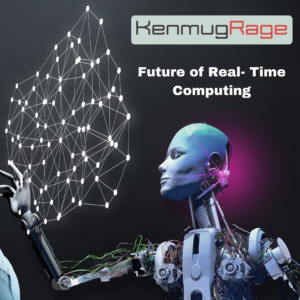
The future of Real- Time Computing holds instigative possibilities and implicit advancements that will further transfigure diligence and enhance our everyday lives. As technology continues to evolve, Real- Time Computing is anticipated to come indeed more important and pervasive.
One area that will probably see significant advancements is the integration of Real- Time Computing with the Internet of effects( IoT). As further bias comes connected and induces real- time data, the capability to reuse and dissect this data in real time will be pivotal. This integration will enable more effective and independent systems, similar as smart metropolises, intelligent transportation systems, and automated manufacturing processes.
Artificial Intelligence( AI) and Machine literacy( ML) will also play a significant part in the future of Real- Time Computing. These technologies will enable more advanced real- time analytics, allowing businesses to prize precious perceptivity from massive quantities of data in real time. AI and ML algorithms will continue to ameliorate and come more sophisticated, leading to more accurate prognostications and visionary decision- making capabilities.
Likewise, the development of amount computing holds pledge for Real- Time Computing. Quantum computers have the eventuality to break complex problems and perform computations at unknown pets, revolutionising data processing and analysis. While amount computing is still in its early stages, its future integration with Real- Time Computing has the potential to unleash new possibilities and push the boundaries of real- time perceptivity and conduct.
Conclusion:
In conclusion, Real- Time Computing is revolutionising diligence and enhancing our everyday lives in remarkable ways. The capability to reuse and dissect data in real time enables businesses to gain instant perceptivity, make quicker opinions, and optimise their operations. Real- Time Computing is essential in diligence where timing is critical, similar to finance, healthcare, and transportation.
It also plays a significant part in enhancing the client experience by delivering substantiated relations in real time. Still, Real- Time Computing comes with its own set of challenges and limitations. Businesses need important calculating systems, dependable data sources, and robust security measures to effectively work the power of Real- Time Computing.
Also Read : Cloud Managed Services: How To Find The Right Fit.
Also Read : The Vital significance of Vishwakarma Yojana in Conserving India’s Rich Heritage



